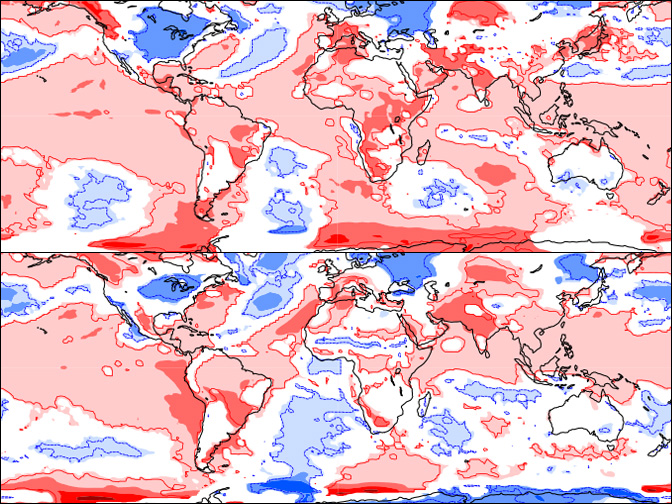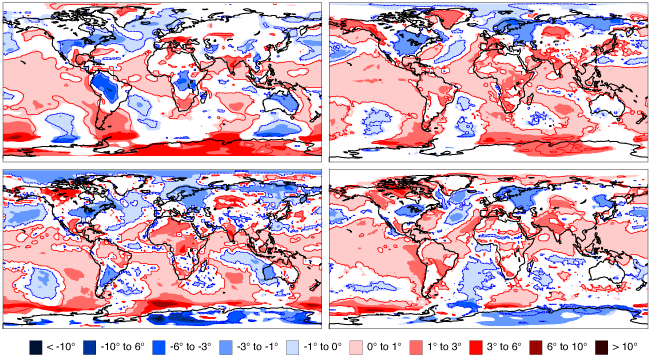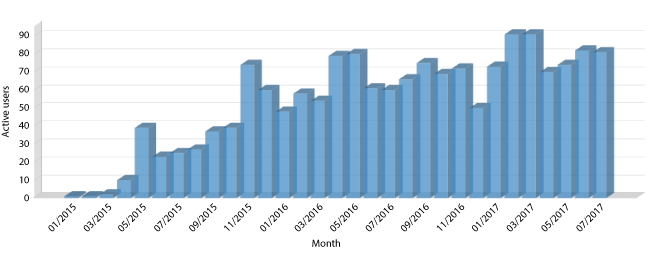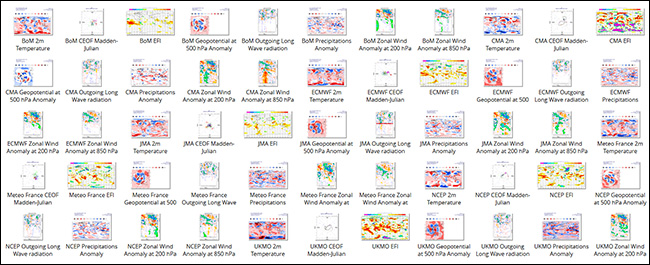

The multi-model sub-seasonal to seasonal (S2S) prediction database hosted by ECMWF has expanded significantly over the last two years and now includes data from 11 forecasting centres.
Set up in May 2015, the database has seen a steady increase in the number of users as well as in the volume of data stored. A recent survey showed a high level of user satisfaction.
Users can view and download ensemble forecasts and re-forecasts up to 60 days ahead covering some 80 forecast fields. Since the database is intended for research rather than operational purposes, the forecasts are made available with a three-week delay.
Multi-model approach
The S2S database brings together forecasts from Australia’s Bureau of Meteorology (BoM); the China Meteorological Administration (CMA); ECMWF; Environment Canada (EC); Italy’s Institute of Atmospheric Sciences and Climate (CNR-ISAC); the Hydrometeorological Centre of Russia (HMCR); the Japan Meteorological Agency (JMA); the Korea Meteorological Administration (KMA); Météo-France; the US National Centers for Environmental Prediction (NCEP); and the UK Met Office.
Making the output of such a large range of forecasting centres available in one place brings a number of benefits.
“Users can make comparisons between the output of different forecasting centres, and they can investigate the benefits of a multi-model approach to sub-seasonal to seasonal prediction,” says ECMWF scientist Frédéric Vitart.
“They can also study the sub-seasonal to seasonal predictability of extreme events and investigate the sources of predictability.”

A possible use of the database is to make comparisons between the output of different forecasting centres. This can help to identify the strengths and weaknesses of different models. The image shows forecasts of 2-metre temperature anomalies from four S2S models: BoM, ECMWF, JMA and Météo-France (clockwise from top left). The forecast starting date is 18 May 2017 and the forecast range is days 12–18.
The differences between the various S2S models also bring some challenges in structuring the database. “We make maximum use of common features to enable users to make comparisons and to combine different models where possible,” says ECMWF Product Team leader Manuel Fuentes.
Users ‘satisfied’
The number of active users of the S2S database has grown to about 80 a month. Every month they download several terabytes of data.

The number of active users of the S2S database has grown significantly since the official launch in May 2015.
In a recent user survey, more than 70% of respondents said they were satisfied or very satisfied with the S2S dataset and the user interface.
“It’s nice to see that many of our users come from disciplines outside meteorology, such as hydrology and agriculture,” says ECMWF Analyst Matthew Manoussakis, who ran the survey.
Meanwhile the database continues to grow. The current volume of 68 terabytes increases by over 2 terabytes a month.
Users can explore the database by visiting the S2S data portal. They are encouraged to use the ECMWF WebAPI if they wish to download data using scripting languages such as Python.
A range of S2S forecast charts are also available on the ECMWF website.

More than 50 S2S forecast charts are available on ECMWF’s website. Users can filter them by product, parameter and forecasting centre.
The S2S database is part of the Sub-seasonal to Seasonal Prediction Project launched by the WMO’s World Weather Research Programme (WWRP) and World Climate Research Programme (WCRP) in November 2013.
